20 Game Boy and Game Boy Advance games we’d like to see on DSiWare
Golden oldies ripe for a DSiWare revival
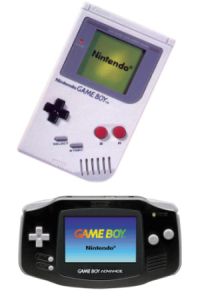
Ever since Nintendo let slip its intention to bring Game Boy and Game Boy Advance games to DSiWare, we’ve been lost in a haze of pining nostalgia for the portable games of our youth.
Now seems like the perfect time to dredge up those memories, hold them up to the light, and consider which of these former greats would stand up to a re-release on the new download service.
We’ve tried to avoid titles that have been rendered obsolete by newer, flashier iterations - we can’t say we pine for a re-release of Metroid II on the Game Boy, for example, when Metroid Fusion on the GBA trumps it in almost every way. So what we’ve gone for is titles that either continue to offer something unique, or still stand out as the best in their series.
With the rose-tinted glasses off and ground into the dirt, it’s perhaps unsurprising that not many original Game Boy games have made it onto our list, with most of the successful GB brands improved immeasurably on subsequent platforms.
Still, these are just our initial ponderings. We’d love to hear your thoughts on the matter in the comments section below. Which Game Boy and Game Boy Advance games would you like to see on DSiWare?
20 Game Boy and Game Boy Advance games for DSiWare
The Legend of Zelda: Link’s Awakening (GB) Since the 1993 release of The Legend of Zelda: Link’s Awakening for the original Game Boy, we’ve seen numerous portable Zelda adventures, each brilliant and each taking full advantage of the more-powerful hardware it was designed for. So why dredge up such an old relic for the sparkly-new DSi?
Since the 1993 release of The Legend of Zelda: Link’s Awakening for the original Game Boy, we’ve seen numerous portable Zelda adventures, each brilliant and each taking full advantage of the more-powerful hardware it was designed for. So why dredge up such an old relic for the sparkly-new DSi?
Well, you could point to the unique setting of Link’s Awakening, which represents one of Link’s rare forays away from Hyrule - this time onto a mysterious island full of dreams and illusions.
Then there’s the accompanying story, which packs in a devastating revelation and a surprisingly emotional payoff. But it’s really far simpler than that. To many people, this writer included, Link’s Awakening remains the finest portable Zelda of them all.
Monster Max (GB)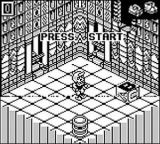 For some people, Monster Max was the only real alternative to Link’s Awakening for the title of “Best Game Boy game ever.”
For some people, Monster Max was the only real alternative to Link’s Awakening for the title of “Best Game Boy game ever.”
Made by legendary programming genius Jon Ritman, Monster Max featured some of the most impressive isometric visuals ever seen on the tiny monochrome screen of the Game Boy. The gameplay easily matched the visuals, too, boasting some thoroughly inspired (and head-scratchingly tough) spatial puzzles.
Monster Max is something of a forgotten gem, as despite racking up stratospheric review scores publisher Titus was extremely tardy in releasing the game. By the time it did, much of the early impetus had faded, and sales were poor. A DSi revamp would hopefully see the game finding the wide audience it so rampantly deserves.
Super Mario Land 2 (GB)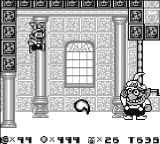 Super Mario Land 2 is to the Mario series what Link’s Awakening is to the Zelda series - a brilliant iteration made essential by its uniqueness. Like its prequel, Super Mario Land 2 was directed not by Nintendo godfather Shigeru Miyamoto, but by Hiroji Kiyotake - designer of the Wario and Samus Aran characters.
Super Mario Land 2 is to the Mario series what Link’s Awakening is to the Zelda series - a brilliant iteration made essential by its uniqueness. Like its prequel, Super Mario Land 2 was directed not by Nintendo godfather Shigeru Miyamoto, but by Hiroji Kiyotake - designer of the Wario and Samus Aran characters.
And so, in keeping with this fresh perspective, we got a brilliant Mario adventure that introduced a strange new enemy (Wario in his first appearance) a new use for the collectible coins (to play bonus games at the end of the levels) and a chance for Mario to venture into gravity-distorting space some 15 years before Super Mario Galaxy on the Wii. After this, the Mario Land series changed considerably to focus on Wario, but more on that later.
Gargoyle’s Quest (GB)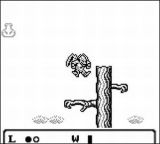 Rather than develop a version of its immensely popular Ghosts ‘n Goblins game for Nintendo’s Game Boy, Capcom decided to take one of that game’s bit-part enemy characters - the titular Gargoyle named Firebrand - and build an action-platform-RPG hybrid around him. It. Whatever.
Rather than develop a version of its immensely popular Ghosts ‘n Goblins game for Nintendo’s Game Boy, Capcom decided to take one of that game’s bit-part enemy characters - the titular Gargoyle named Firebrand - and build an action-platform-RPG hybrid around him. It. Whatever.
It turned out rather well, offering one of the freshest experiences on the boxy handheld. You initially negotiated a fairly typical top-down RPG, chatting to fellow beasties and getting involved in scraps. When the action kicked off, though, you were placed into a slick side-on action platformer complete with upgradeable gargoyle-powers.
You could fly, grip onto walls, fire gooey projectiles to use as hand-holds and generally do things you couldn’t usually expect to do in platform games of the time.
The series hasn’t seen life on a handheld since, so we’d love to see Gargoyle's Quest given a new lease of life on DSi.
Astro Boy: Omega Factor (GBA)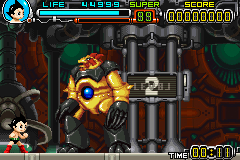 Regular readers of Pocket Gamer will know of our fondness for Japanese boutique developer Treasure, which was most recently responsible for the loony DS blaster Bangai-O Spirits. Astro Boy: Omega Factor was an earlier effort on the GBA, and it was just about as special.
Regular readers of Pocket Gamer will know of our fondness for Japanese boutique developer Treasure, which was most recently responsible for the loony DS blaster Bangai-O Spirits. Astro Boy: Omega Factor was an earlier effort on the GBA, and it was just about as special.
Ostensibly a side-scrolling action-platformer, Astro Boy exceeded its remit by offering a powerful and varied array of weapons, some inspired level-design and a mind-warping plot that saw you spinning back in time at the half-way point like some kind of robotic Marty McFly from Back to the Future.
Like Monster Max, it sold diddly squat in this country, so we’d like to see it given a second chance.
Kuru Kuru Kururin (GBA) While we’re on the subject of obscure Japanese gems, Kuru Kuru Kururin was just that - but it really shouldn’t have been. Featuring the kind of simplistic gameplay and minimal player input that’s all the rage now, Kuru Kuru Kururin would be perfect for the DSi download service.
While we’re on the subject of obscure Japanese gems, Kuru Kuru Kururin was just that - but it really shouldn’t have been. Featuring the kind of simplistic gameplay and minimal player input that’s all the rage now, Kuru Kuru Kururin would be perfect for the DSi download service.
You control a perpetually-rotating stick, which needs to be manoeuvred through some fiendishly twisty corridors using only the D-pad (though it would work like a dream if adapted for touch-controls).
Our preference would be for the superior sequel, Kururin Paradise (pictured), which was a Japan-only release. As we’ve seen with the Wii's Virtual Console, Nintendo is open to bringing across such localised releases to a new audience, so we live in hope.
Final Fight One (GBA)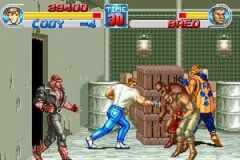 As one of the early releases for the GBA, Final Fight One really established the capabilities of the system as being a cut above the ‘portable SNES’ that it had been casually described as. In this version of the classic side-scrolling beat-‘em-up, Capcom managed to squeeze an almost perfect arcade conversion into the palms of our hands.
As one of the early releases for the GBA, Final Fight One really established the capabilities of the system as being a cut above the ‘portable SNES’ that it had been casually described as. In this version of the classic side-scrolling beat-‘em-up, Capcom managed to squeeze an almost perfect arcade conversion into the palms of our hands.
That included several features that didn’t make it into the SNES version some ten years earlier, including all three playable characters and the missing Industrial Area stage. A straight conversion to the DSi would be beautiful, but the implementation of wireless multiplayer would be an essential tweak.
Golden Sun and Golden Sun: The Lost Age (GBA)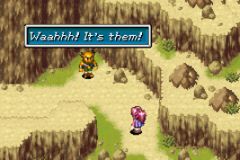 Capcom wasn't the only one showing off what the GBA could do in 2001. Camelot released the graphically lush Golden Sun to great acclaim, and all but wrapped up the RPG genre on Nintendo’s new handheld within its first year.
Capcom wasn't the only one showing off what the GBA could do in 2001. Camelot released the graphically lush Golden Sun to great acclaim, and all but wrapped up the RPG genre on Nintendo’s new handheld within its first year.
Golden Sun: The Lost Age stuck with the winning formula of the first game, featuring an overlapping story and the same mix of random turn-based battles and exploration.
The DS has seen relatively few top quality dedicated RPGs, with the likes of Square Enix favouring remakes of old SNES games instead. So bringing the two Golden Sun games to DSiWare would be a welcome move, and would hopefully stimulate interest in a possible DSi sequel.
Mario vs. Donkey Kong (GBA)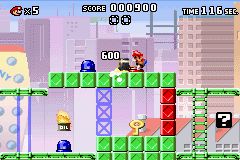 Mario vs. Donkey Kong is one of the games on this list that did see a direct sequel on DS, but although it shared a similar art style and some key elements with the GBA original, Mario vs. Donkey Kong 2 was a very different beast with a completely revised core mechanic.
Mario vs. Donkey Kong is one of the games on this list that did see a direct sequel on DS, but although it shared a similar art style and some key elements with the GBA original, Mario vs. Donkey Kong 2 was a very different beast with a completely revised core mechanic.
Because of this, a DSi release of the first game would be most welcome. In Mario vs. Donkey Kong, you control a tiny Mario as you negotiate a series of self-contained, puzzle-strewn rooms. It’s a refreshing step back to the spirit of the original Donkey Kong, where getting from A to B as efficiently as possible was your only concern.
Legend of Zelda: Minish Cap (GBA).jpg) If the thought of a Zelda game not made by Nintendo is a shocking one, it certainly isn’t without precedent. Having made the decent Game Boy Colour duo of The Legend of Zelda: Oracle of Ages and Oracle of Seasons, Flagship was confidently handed the reins for an all-new GBA adventure, The Minish Cap. It didn’t disappoint.
If the thought of a Zelda game not made by Nintendo is a shocking one, it certainly isn’t without precedent. Having made the decent Game Boy Colour duo of The Legend of Zelda: Oracle of Ages and Oracle of Seasons, Flagship was confidently handed the reins for an all-new GBA adventure, The Minish Cap. It didn’t disappoint.
Featuring all of the almost indefinable elements that make a Zelda game feel like a Zelda game, The Minish Cap also introduced some of Flagship’s own. Not least of these was the titular hat, which acted as a cheeky companion and a facilitator for the game’s USP - shrinking Link to the size of a bug. Nintendo could do a lot worse than introduce DSi gamers to its delights.
F-Zero: Maximum Velocity/ GP Legend (GBA) We never got a DS version of Nintendo’s futuristic racer, so bringing one of the two excellent GBA versions to the DSi download service would be a very welcome move indeed. After all, it’s not like there are any other decent pacey racers on the dual-screen format.
We never got a DS version of Nintendo’s futuristic racer, so bringing one of the two excellent GBA versions to the DSi download service would be a very welcome move indeed. After all, it’s not like there are any other decent pacey racers on the dual-screen format.
The 2001 release of Maximum Velocity resurrected the tight 2D racing first introduced to us on the SNES ten years earlier, while 2004’s GP Legend was an Anime spin-off rather than a direct sequel. Both, however, contained the trademark tight course design and lightning-quick gameplay of the series, so either would be welcome on our DSi’s SD card.
Metroid Fusion (GBA)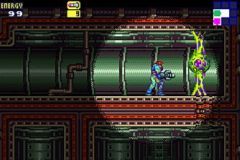 Again, we’ve been denied a proper Metroid adventure on DS (Metroid Prime: Hunters was more of an FPS-shaped spin-off), so the chance to get our teeth into Metroid Fusion again would be a real treat. If you’re new to this gaming lark, Metroid games are free-roaming platform adventures set in a dark sci-fi universe, with you playing the role of technologically enhanced bounty-hunter Samus Aran.
Again, we’ve been denied a proper Metroid adventure on DS (Metroid Prime: Hunters was more of an FPS-shaped spin-off), so the chance to get our teeth into Metroid Fusion again would be a real treat. If you’re new to this gaming lark, Metroid games are free-roaming platform adventures set in a dark sci-fi universe, with you playing the role of technologically enhanced bounty-hunter Samus Aran.
We’ve opted for Metroid Fusion over the GBA’s other Metroid adventure, Zero Mission, for the simple reason that it’s a wholly original game - Zero Mission is a re-imagining of the very first Metroid on the NES. Still, we wouldn’t say no to either.
Wario Land 4 (GBA)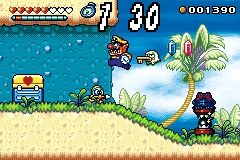 The Wario Land series has always stood out as the black sheep in the Mario family of distinguished platformers. It’s the weird uncle who gets drunk at family get-togethers and always says something mildly outrageous. The parents may not approve, but the kids love him.
The Wario Land series has always stood out as the black sheep in the Mario family of distinguished platformers. It’s the weird uncle who gets drunk at family get-togethers and always says something mildly outrageous. The parents may not approve, but the kids love him.
Wario Land 4 on GBA continued and perfected the formula of quirky gameplay and imaginative level design, asking you to steadily make your way through each level, only to then have you dash your way out against a strict time limit.
While WarioWare Touched is an excellent game, we haven’t seen a memorable Wario-led platformer on the DS (the less said about Wario: Master of Disguise the better), so we’d happily pay to download Wario Land 4.
Mother 3 (GBA)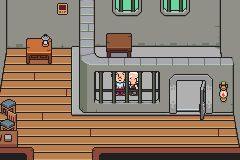 If you’re European and haven’t heard of Mother, that’s because we’ve never been given a version to call our own. But there’s a vocal minority of fans that would give their stylus-wielding hands to have an English version of Mother 3, the GBA iteration of a loose trilogy.
If you’re European and haven’t heard of Mother, that’s because we’ve never been given a version to call our own. But there’s a vocal minority of fans that would give their stylus-wielding hands to have an English version of Mother 3, the GBA iteration of a loose trilogy.
Unlike most Japanese RPGs, Mother games tend to take place in a quirky, cartoony version of western suburbia. Weapons are everyday objects rather than mystical swords, and everything’s shot through with a charming sense of humour - apparently. We wouldn’t know for sure, and that’s rather the point behind Mother 3’s place on our list.
Advance Wars (GBA) Wait a minute, haven’t there been two DS Advance Wars released? Yes, there have (Dual Strike and Dark Conflict). Don’t they render the original GBA Advance Wars slightly redundant?
Wait a minute, haven’t there been two DS Advance Wars released? Yes, there have (Dual Strike and Dark Conflict). Don’t they render the original GBA Advance Wars slightly redundant?
No, they don’t. Starting with the GBA sequel before moving onto the DS, various elements have been added and tweaked with no other effect than to dilute the core experience.
Put simply, Advance Wars on GBA is as damn-near perfect a portable strategy experience as you’ll ever find. In much the same way as Tetris has never - and probably can never - be improved, we can’t see how you can enhance Advance Wars’s flawless blend of balanced units, varied terrain and charming art style. DSiWare version please, Nintendo!
Rhythm Tengoku (GBA) We can’t see this one happening for a while, thanks to the early DSi release of the localised sequel Rhythm Heaven. Rhythm Tengoku is the Japan-only GBA prequel, which has you tapping your handheld’s buttons in time to a bunch of mad set-pieces and a joyous J-pop soundtrack.
We can’t see this one happening for a while, thanks to the early DSi release of the localised sequel Rhythm Heaven. Rhythm Tengoku is the Japan-only GBA prequel, which has you tapping your handheld’s buttons in time to a bunch of mad set-pieces and a joyous J-pop soundtrack.
We’d like to think that decent sales of Rhythm Heaven would see this GBA gem get the English release it deserves, because, for our money, the simple digital controls make it a superior game to the touchscreen-powered Heaven.
Regardless of such preferential issues, though, both games are excellent and deserve to sit side-by-side on western DSis.
WarioWare, Inc.: Minigame Mania (GBA) Made by the same people as Rhythm Tengoku, and featuring a similar madcap, bite-sized appeal, it could be said that the GBA's Minigame Mania enjoys the same kind of superiority over its sequels. While WarioWare: Twisted on GBA and WarioWare: Touched on DS were both ingenious elaborations on the mini-game theme, they lacked the binary immediacy afforded Minigame Mania by its digital controls.
Made by the same people as Rhythm Tengoku, and featuring a similar madcap, bite-sized appeal, it could be said that the GBA's Minigame Mania enjoys the same kind of superiority over its sequels. While WarioWare: Twisted on GBA and WarioWare: Touched on DS were both ingenious elaborations on the mini-game theme, they lacked the binary immediacy afforded Minigame Mania by its digital controls.
Again, with WarioWare: Snapped! on the bill for DSi, we wouldn’t envisage seeing this appear on DSiWare for a while yet. But if it ever did, we doubt it would be overshadowed in gamers’ affections by the newer versions.
Boktai/Boktai 2 (GBA) Konami’s vampiric action-RPG has seen a DS version released called Lunar Knights, but while that game improved on many of the series’ elements, it was missing one feature that was essential to its charms. Both GBA Boktai games (there was also a third Japan-only release) came with a light sensor built in to the game cartridges, with actual sunlight helping to power your character’s Solar Gun and influence the gameworld.
Konami’s vampiric action-RPG has seen a DS version released called Lunar Knights, but while that game improved on many of the series’ elements, it was missing one feature that was essential to its charms. Both GBA Boktai games (there was also a third Japan-only release) came with a light sensor built in to the game cartridges, with actual sunlight helping to power your character’s Solar Gun and influence the gameworld.
How could you bring such a physical feature to a downloadable DSiWare version? We’re no technical-wizards, but couldn’t the DSi camera be set up to mimic a light sensor? It would be a novel use of the new technology, and a chance to relive a unique series.
Bit Generations (GBA)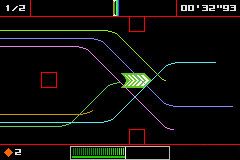 The Bit Generations series was a collection of seven original but retro-influenced games for the GBA, all of which were presented in a hip minimalist art-style. These varied from simple block puzzlers (Coloris) to Tron-style racing games (Dotstream) and on to experimental games that could be played with your eyes closed (Soundvoyager).
The Bit Generations series was a collection of seven original but retro-influenced games for the GBA, all of which were presented in a hip minimalist art-style. These varied from simple block puzzlers (Coloris) to Tron-style racing games (Dotstream) and on to experimental games that could be played with your eyes closed (Soundvoyager).
Despite plenty of positive import reviews, though, they were never released outside of Japan - other than through a couple of WiiWare remakes (labelled the Art Style series). This lack of Western exposure, coupled with the simple mechanics and small file-sizes, would make them ideal candidates for DSiWare release. Preferably at a budget price.
Castlevania: Aria of Sorrow (GBA)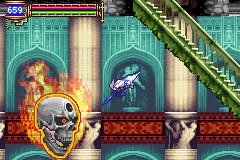 It’s hard to keep track of all the Castlevania games released by Konami, with each of the Nintendo handhelds playing host to several distinct iterations. That Aria of Sorrow, the last of three made-for-GBA adventures, stands out from such an esteemed series is a testament to its enduring quality.
It’s hard to keep track of all the Castlevania games released by Konami, with each of the Nintendo handhelds playing host to several distinct iterations. That Aria of Sorrow, the last of three made-for-GBA adventures, stands out from such an esteemed series is a testament to its enduring quality.
Taking the sprawling action-platformer (with RPG elements) template of its two predecessors, Aria of Sorrow built in a compelling plot, impeccable character-progression and some stunning presentation. It was so well received that Konami commissioned a rare direct-sequel on DS, Dawn of Sorrow, which failed to improve on Aria of Sorrow’s winning formula.
